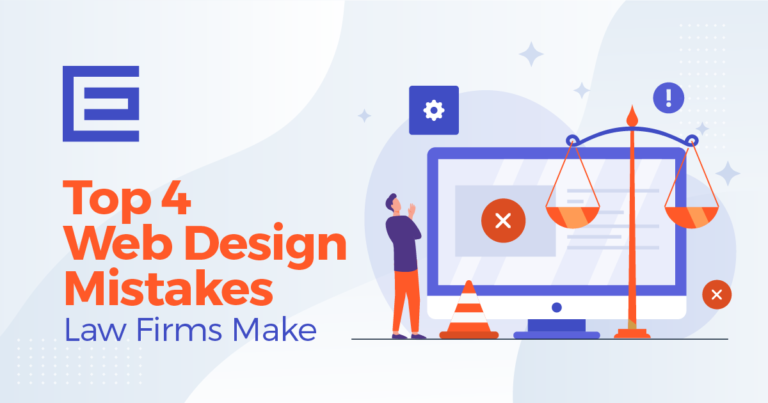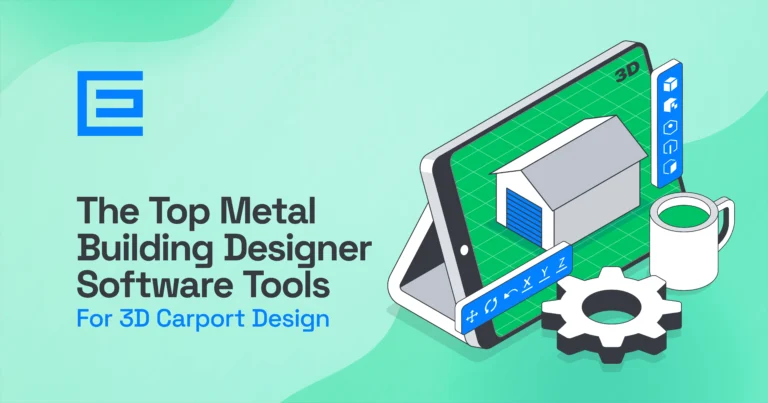At its core, Web design involves creating and maintaining websites. It’s not just about crafting a visually appealing layout; it encompasses a wide range of elements including graphic design, user experience (UX) design, interface design, search engine optimization (SEO), and content creation. The goal is to combine form and function in a way that makes a website enjoyable, navigable, and accessible for users.
As the digital front door to businesses, educational institutions, governments, and personal brands, a website often forms the first impression for potential customers, students, or clients. Good web design goes beyond aesthetics. It creates a seamless user experience that helps visitors easily find the information they need and take desired actions, whether that’s making a purchase, signing up for a newsletter, or simply learning more about a topic or organization.
Websites that are professionally designed, easy to navigate, and regularly updated signal to users that a business or individual is serious about their digital presence. This is particularly important as more and more transactions and interactions take place online.
A well-designed website takes into account the diverse needs of all its visitors, including those with disabilities, ensuring that everyone has equal access to information and functionality. This not only broadens the reach of a website but also reflects a commitment to diversity and inclusion.
Lastly, in the realm of SEO, the design of a website significantly impacts its visibility on search engines. A website that is optimized for search engines through responsive design, fast loading times, and effective navigation structure is more likely to rank higher in search results, drawing more traffic and potentially more business.
The Basics of Web Design
At its heart, web design involves a careful blend of artistic creativity and technical prowess, all geared towards crafting a digital space that is not only visually appealing but also functional and user-friendly.
Overview of Web Design
Web design is more than just the process of creating a website; it’s about telling a story, conveying a brand’s identity, and providing a seamless user experience. It involves a strategic layout of elements, including text, images, and interactive features, all structured to guide and engage the user. This process requires a deep understanding of both the target audience and the objectives of the website, whether it’s to inform, entertain, sell products or services, or provide a platform for social interaction.
Key Components of Web Design
Visual Aesthetics
The visual aspect of web design is what first captures a user’s attention. It includes the choice of color scheme, typography, images, and overall graphical elements. The visual design must align with the brand’s identity and message, creating a cohesive and harmonious look that enhances the user’s experience. It’s not just about beauty; it’s about creating a visual language that communicates effectively with the audience.
User Experience (UX)
UX design is all about understanding and optimizing the user’s journey through the website. It involves researching and implementing the best ways to ensure the website is not only easy to use but also enjoyable. This includes optimizing website speed, ensuring content is easily accessible, and creating a logical flow that guides the user through the site. A good UX design anticipates the needs and preferences of the user, making their interaction as smooth and satisfying as possible.
User Interface (UI)
While UX focuses on the overall feel of the experience, UI is about the specific elements that users interact with on the site. This includes buttons, text fields, sliders, and all the interactive elements. UI design is about creating an intuitive interface where each element is self-explanatory and efficient. The goal is to minimize the learning curve for the user, allowing them to navigate the site with ease and confidence.
Content Layout
The layout of content on a web page plays a crucial role in how information is consumed. This involves organizing text, images, and other elements in a way that is both aesthetically pleasing and functional. A well-thought-out content layout ensures that the most important information catches the user’s eye first and that the content is easy to scan and digest. The layout should also adapt seamlessly to different screen sizes and devices, ensuring a consistent experience across all platforms.
The Process of Web Design
The process of web design is a journey that transforms an initial concept into a fully functional and engaging website. This journey involves several critical stages, each requiring a unique blend of creativity, technical skill, and strategic thinking.
Planning and Conceptualization
The first step in the web design process is planning and conceptualization. This stage is all about laying the groundwork for the website. It involves understanding the client’s goals, target audience, and the core message they wish to convey. During this phase, web designers and stakeholders collaborate to outline the website’s objectives, define its scope, and create a sitemap that outlines the structure of the site. Wireframes are often created to provide a basic visual guide for the layout of web pages, setting the stage for more detailed design work.
Designing for Different Devices: Responsive Design
In today’s digital landscape, a website must perform flawlessly across a multitude of devices, from desktops to smartphones. This is where responsive design comes into play. Responsive design ensures that a website’s layout and content automatically adjust to fit the screen size and resolution of the device it is being viewed on. This adaptability is crucial for providing an optimal user experience, as it ensures that the website is easily navigable and readable regardless of the device used. Designers achieve this through flexible grid layouts, scalable images, and media queries in CSS.
User-Centric Approach in Design
A user-centric approach is fundamental in web design. This approach focuses on truly understanding and anticipating the needs and preferences of the site’s users. It involves creating personas, conducting user research, and using data-driven insights to guide design decisions. The aim is to create a website that is not just visually appealing but also intuitive and easy to use for its intended audience. This means prioritizing usability, ensuring content is accessible, and creating an engaging user journey that encourages interaction and fulfills user needs.
Implementing SEO in Web Design
Search Engine Optimization (SEO) is an integral part of the web design process. It’s not just about creating a website that looks good; it’s about designing one that can be easily found by search engines. This includes using clean, semantic HTML code, optimizing images and videos, ensuring fast loading times, and creating a mobile-friendly design. Additionally, SEO involves structuring content with proper header tags, using descriptive alt tags for images, and creating SEO-friendly URLs. By integrating SEO best practices into the design process, designers can help ensure that the website not only reaches its target audience but also ranks well in search engine results.
Elements of Effective Web Design
Effective web design is not just about how a website looks; it’s about how it works and communicates with its users. Certain key elements are crucial in creating a website that is not only visually appealing but also functional and user-friendly. These elements contribute significantly to the overall experience a user has on a website.
Color Schemes and Typography
Color schemes and typography are the foundational elements of a website’s visual appeal. The choice of colors can significantly affect the mood and perception of the site. Colors need to be chosen carefully to reflect the brand’s identity and to ensure readability and visual harmony. Similarly, typography plays a crucial role in the user experience. The font style, size, and spacing should be legible and accessible across different devices and screens. Consistent use of typography and color schemes across all pages strengthens brand identity and enhances the user’s ability to navigate and understand the site.
Navigation and Menu Design
Navigation is the roadmap of a website and is pivotal in determining the user’s journey and experience. A well-designed navigation system should be intuitive and straightforward, allowing users to find information quickly and easily. The menu design should be simple and consistent throughout the website. It should be structured logically, with the most important items placed in prominent positions. Dropdown menus, breadcrumbs, and search features can enhance navigation, making the website more user-friendly.
Imagery and Visual Elements
Imagery and other visual elements such as icons and graphics play a significant role in web design. They not only add to the aesthetic appeal but also help in communicating messages more effectively. High-quality, relevant images can capture attention, evoke emotions, and create a connection with the audience. However, it’s important to balance imagery with the overall design and content of the site to avoid visual clutter and distractions.
Call-to-Action Buttons
Call-to-action (CTA) buttons are essential in guiding users towards desired actions, such as making a purchase, signing up for a newsletter, or contacting for more information. These buttons should be prominently placed and designed to stand out, yet they should harmonize with the overall design of the website. Effective CTAs are clear, concise, and use action-oriented language, prompting users to take the next step.
Loading Speed and Mobile Responsiveness
In an age where users expect immediate results, the loading speed of a website is critical. Websites that load quickly provide a better user experience and are favored by search engines. Optimizing image sizes, minimizing code, and using efficient hosting solutions are ways to improve loading speed. Additionally, mobile responsiveness is no longer optional. With an increasing number of users accessing websites via mobile devices, it’s essential for websites to be responsive and adapt to various screen sizes and orientations. This ensures a consistent and accessible experience for all users, regardless of how they access the site.
Tools and Technologies in Web Design
The field of web design is continually evolving, with new tools and technologies emerging to enhance the design and development process. These tools and technologies play a crucial role in creating efficient, responsive, and visually appealing websites. Understanding and utilizing the right tools is essential for any web designer looking to stay current and produce high-quality work.
Popular Web Design Tools
Several web design tools have become staples in the industry, each offering unique features and functionalities that cater to different aspects of the design process. Adobe XD and Sketch are two such prominent tools widely used by professionals.
- Adobe XD: Adobe XD is a powerful vector-based tool used for designing and prototyping user experiences for web and mobile apps. It offers an array of features like wireframing, interactive prototyping, and collaboration tools, making it a comprehensive solution for designers. Its integration with other Adobe Creative Cloud apps like Photoshop and Illustrator makes it a popular choice for designers who are already part of the Adobe ecosystem.
- Sketch: Sketch is another popular design tool, particularly favored for its simplicity and focus on user interface design. It is a vector-based application that makes it easy to create high-fidelity designs and prototypes. Sketch’s extensive plugin ecosystem allows designers to extend its functionality, making it a versatile tool for web design.
Front-End Development Languages
The construction of a website’s front end—the part users interact with—is governed by three primary languages: HTML, CSS, and JavaScript. Each plays a distinct role in website creation.
- HTML (HyperText Markup Language): HTML is the backbone of any website. It provides the basic structure of sites, which is then enhanced and modified by other technologies like CSS and JavaScript. HTML dictates the organization of content on a web page, defining elements such as headings, paragraphs, and images.
- CSS (Cascading Style Sheets): CSS is used to control the presentation, formatting, and layout of a website. It allows web designers to create visually engaging webpages with various color schemes, fonts, and layouts. CSS is what makes the website look good and allows for the customization of styles to adapt to different screen sizes and devices.
- JavaScript: JavaScript is a scripting language that enables interactive elements on a website. It is used to enhance user experience by allowing for dynamic content such as interactive forms, animated graphics, and complex actions like searching and sorting data.
Content Management Systems (CMS) Overview
Content Management Systems (CMS) are software applications that allow users to create, manage, and modify content on a website without the need for specialized technical knowledge. CMS platforms have become increasingly popular, especially for users who want to manage their websites without deep understanding of web development.
- Popular CMS platforms like WordPress, Joomla, and Drupal offer user-friendly interfaces, customizable templates, and a range of plugins and extensions. They provide a flexible and accessible way for individuals and businesses to maintain their online presence. WordPress, in particular, powers a significant portion of the web due to its ease of use and extensive customization options.
As the digital landscape continues to evolve, staying updated with these tools and technologies is crucial for any web designer aiming to produce relevant and impactful web designs.
The Role of a Web Designer
The role of a web designer is pivotal in the digital world, where websites serve as the primary interface between businesses and their audience. A web designer’s responsibilities and the skills they must possess are diverse, encompassing both creative and technical aspects.
Responsibilities of a Web Designer
The primary responsibility of a web designer is to create and maintain the aesthetic and functional aspects of a website. This involves a variety of tasks:
- Designing Web Pages: Web designers are responsible for designing the layout, color scheme, and overall look and feel of a website. They need to ensure that the design is not only visually appealing but also aligns with the brand’s identity and messaging.
- Enhancing User Experience: A significant part of web design is focused on improving the user experience. This means creating a site that is easy to navigate, user-friendly, and accessible to all users, including those with disabilities.
- Optimizing for Different Devices: With the increasing use of smartphones and tablets, web designers must ensure that websites are responsive and function well across various devices.
- Collaborating with Other Teams: Web designers often work closely with other professionals such as web developers, content creators, and marketing teams to ensure that the website meets all technical requirements and marketing goals.
- Updating Websites: A web designer’s job doesn’t end with the launch of a website. They must continually update the site, fixing any issues, implementing new features, and ensuring that it stays current with web standards and technologies.
Skills Required for Web Design
To fulfill these responsibilities effectively, a web designer must possess a mix of creative and technical skills:
- Proficiency in Design Software: Knowledge of design software like Adobe Photoshop, Illustrator, and web design tools like Adobe XD and Sketch is essential for creating visual elements of a website.
- Understanding of Web Development Languages: While not always required to code websites themselves, having a basic understanding of HTML, CSS, and JavaScript is beneficial for web designers to understand the possibilities and limitations of web design.
- Graphic Design Skills: A strong grasp of graphic design principles is crucial for creating visually appealing and coherent designs.
- UX/UI Design Knowledge: Understanding user experience (UX) and user interface (UI) design is critical for creating intuitive and engaging websites.
- SEO Knowledge: Awareness of SEO principles is important for designing websites that rank well in search engines.
- Communication and Collaboration Skills: Effective communication and the ability to work collaboratively with other team members, including developers and content strategists, are vital for a web designer.
- Problem-Solving Skills: The ability to troubleshoot design issues and find creative solutions to technical and design challenges is a key skill for web designers.
Web designers play a crucial role in creating digital experiences that are not only aesthetically pleasing but also functional, user-friendly, and effective in meeting the strategic objectives of businesses and organizations. As the digital landscape evolves, so does the role of the web designer, continually adapting to new challenges and innovations in the field.
Trends in Web Design
The world of web design is constantly evolving, with new trends emerging as technology advances and user preferences change. Staying abreast of these trends is crucial for web designers who aim to create contemporary and effective websites.
Current Trends in Web Design
Several key trends currently dominate the web design landscape:
- Minimalism: This trend is all about simplicity and functionality. Minimalist web design focuses on using only essential elements – simple color schemes, clean text, and uncluttered layouts. The idea is to remove any superfluous elements that don’t serve a clear purpose, making the website easy to navigate and content easy to digest. This approach not only creates a sleek and modern look but also improves website loading times and enhances user experience.
- Animation: The use of animation in web design has grown significantly. Subtle animations, such as hover effects, loading animations, and background videos, can enhance the user experience by making the website more interactive and engaging. However, it’s important to use animation sparingly and ensure it doesn’t detract from the website’s usability or performance.
- Responsive Design: With the increasing use of mobile devices to access the internet, responsive design has become a necessity. This trend involves designing websites that adapt and function seamlessly across various devices and screen sizes, providing a consistent user experience.
- Dark Mode: Dark mode web designs are becoming increasingly popular. This design trend is not only visually striking but also reduces eye strain in low-light conditions and can even save battery life on mobile devices.
- Voice User Interface (VUI): As voice search becomes more prevalent, integrating voice user interfaces into web design is becoming a trend. This involves designing websites that are compatible with voice search and voice commands, making them more accessible and user-friendly.
The Future of Web Design: Predictions and Innovations
Looking to the future, several predictions and innovations are set to shape the world of web design:
- Artificial Intelligence and Machine Learning: AI and machine learning are expected to play a significant role in web design. AI can be used for automated web design, personalizing user experiences, and providing intelligent user interactions.
- Augmented Reality (AR) and Virtual Reality (VR): As AR and VR technologies become more accessible, they are likely to be integrated into web design. This could revolutionize the way users interact with websites, offering immersive and interactive experiences.
- Sustainability in Web Design: With growing awareness of environmental issues, sustainable web design is likely to gain traction. This involves creating websites that are energy-efficient, with reduced carbon footprints.
- Advanced Interactivity: Expect to see more advanced interactive elements in web design, such as gesture-based navigation or 3D elements, providing a more dynamic and engaging user experience.
- Inclusivity and Accessibility: There will be a stronger focus on designing websites that are inclusive and accessible to all users, including those with disabilities. This means more attention to accessibility standards and inclusive design principles.
Trends in web design are an exciting mix of aesthetics, technology, and user experience. From the simplicity of minimalism to the advanced potential of AI and AR/VR, these trends are shaping the way websites are designed and interacted with. As technology continues to evolve, so too will the trends in web design, continually pushing the boundaries of what’s possible in the digital realm.
FAQs
Here are some frequently asked questions that shed light on web design.
What is the difference between web design and web development?
The terms ‘web design’ and ‘web development’ are often used interchangeably, but they refer to different aspects of website creation.
- Web Design focuses on the aesthetic and usability aspects of a website. This involves the creation of the layout, color scheme, graphics, and overall visual appearance of the site. Web designers use design software like Adobe Photoshop, Sketch, or Adobe XD to create the visual elements of the site. Their primary concern is how the website looks and how users interact with it.
- Web Development, on the other hand, involves turning the designs created by web designers into a live, functioning website. This is done using coding languages like HTML, CSS, and JavaScript. Web developers are split into two categories: front-end developers, who turn a design into a website that users can interact with, and back-end developers, who work on server-side development involving databases and website architecture.
How does web design impact user experience?
Web design plays a crucial role in shaping the user experience. A well-designed website can make the difference between a user staying on the site and engaging with the content or leaving due to frustration or confusion. Key aspects of web design that impact user experience include:
- Navigation: Easy and intuitive navigation helps users find what they are looking for quickly and efficiently.
- Visual Appeal: An aesthetically pleasing design can create a positive first impression and keep users engaged.
- Loading Time: Fast-loading pages contribute to a smooth user experience.
- Content Layout: Well-organized content that is easy to read and understand improves user interaction.
- Responsiveness: A design that adapts to various devices and screen sizes ensures a consistent experience across all platforms.
What are the best practices for mobile web design?
With the increasing use of mobile devices to access the internet, mobile web design has become essential. Best practices for mobile web design include:
- Responsive Design: Ensure that the website adapts to fit the screen size of any device, providing an optimal viewing experience.
- Simplified Navigation: Streamline navigation to make it easier to use on smaller screens.
- Touch-Friendly Elements: Design buttons and other interactive elements to be easily tapped with a finger.
- Fast Loading Times: Optimize images and scripts to ensure the website loads quickly on mobile devices.
- Legible Text: Use font sizes and styles that are easy to read on smaller screens.
How important is SEO in web design?
SEO (Search Engine Optimization) is extremely important in web design. It’s not just about creating a visually appealing site but also about designing a website that is discoverable by search engines. Key considerations include:
- Mobile-Friendliness: As search engines prioritize mobile-friendly sites, ensuring your website is responsive is crucial for SEO.
- Fast Loading Speeds: Search engines favor websites that load quickly.
- Clean and Structured Code: Well-structured HTML and CSS can help search engines better understand and rank your site.
- Content and Keywords: Including relevant keywords in your content and meta tags can improve your site’s visibility.
- User Experience: Search engines consider user engagement metrics, so a well-designed site that keeps visitors engaged can rank higher.
In summary, understanding the nuances between web design and development, the impact of design on user experience, the best practices for mobile design, and the role of SEO in web design are essential for anyone involved in creating or managing a website. These elements work together to ensure a website is not only visually appealing but also functional, user-friendly, and well-positioned in search engine results.
Moreover, continuous learning and adaptation are vital in this rapidly changing field. Whether you’re a seasoned designer or just starting out, there’s always more to learn and new horizons to explore in web design. Embracing these practices not only leads to the creation of better websites but also contributes to the growth and success of businesses and brands in the digital world.
Tags: Our Favorites







